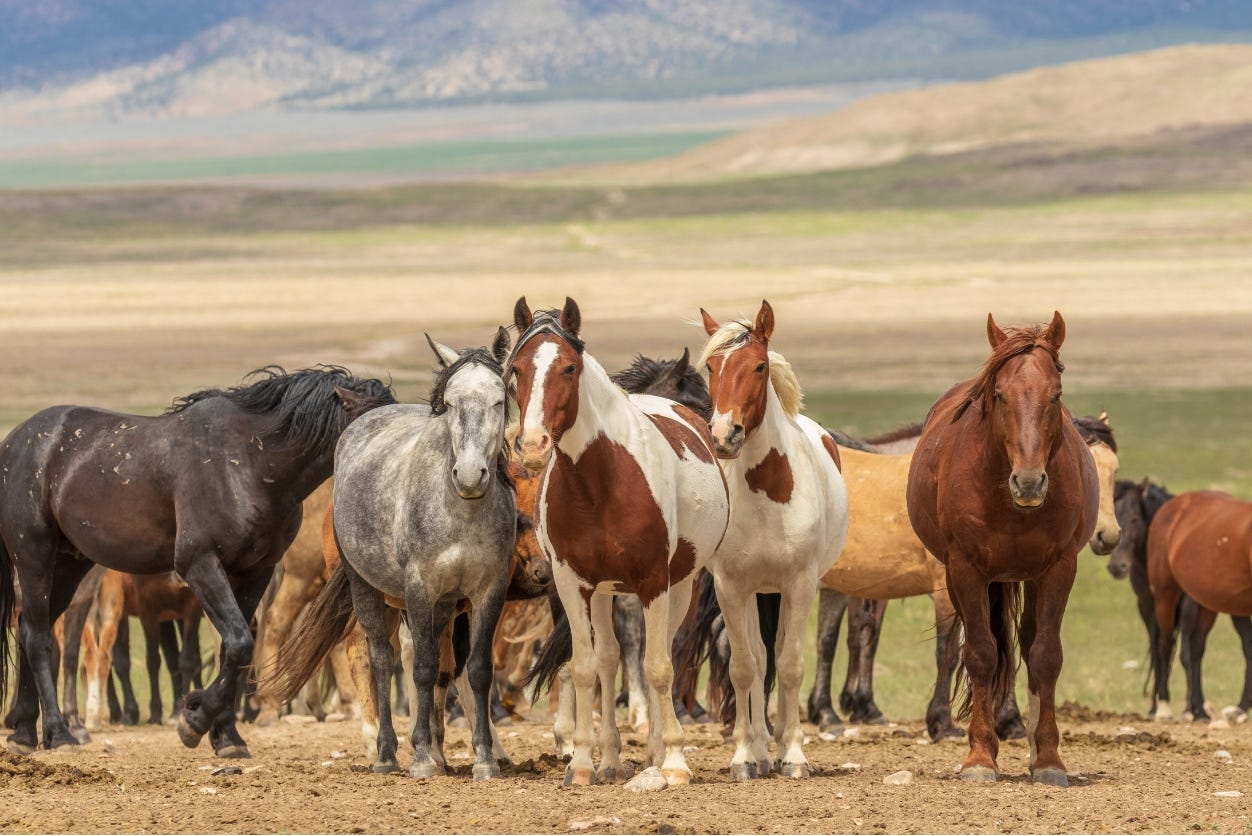Good News #23
UN High Seas Treaty, wild horse habitat in Wyoming, successful lawsuit against Chevron, swimming the Chicago River, and California's solar-covered canal
Here’s your weekly roundup of environmental good new stories from around the world. Enjoy!
Louisiana community won a lawsuit against Chevron
A Louisiana jury has awarded $744.6 million to Plaquemines Parish for environmental damages after finding Chevron (via its predecessor Texaco) liable for decades of harm to the state’s fragile coastal wetlands. Damages include land loss, soil contamination, and abandoned equipment. While Chevron plans to appeal, this verdict is seen as the first among many against energy companies accused of contributing to Louisiana’s serious land erosion issues.
Swimmers braved the Chicago River
On September 21, 2025, nearly 300 swimmers took to the Chicago River in the first organized swim in nearly a century — a mile-long loop through parts of the river’s downtown. Once notorious for toxic pollution and industrial waste, the river has been transformed by decades of environmental cleanup, new infrastructure, and stronger pollution regulation. Organizers say the event is emblematic of Chicago’s recovery and renewed public connection with this long-neglected waterway. Authorities ensured safety by testing water quality and vetting participants.
Wild Horse habitat in Wyoming has been protected
A federal appeals court has blocked a Bureau of Land Management plan that would have permanently eliminated two wild horse herds in southwest Wyoming. The decision protects habitat spread across over 2 million acres, preserving the Salt Wells Creek and Great Divide Basin herds. The court ruled that the BLM had failed to consider legal requirements under the Wild Free-Roaming Horses and Burros Act, including maintaining a “thriving natural ecological balance.”
UN High Seas Treaty has been ratified by 60 countries
After two decades of negotiations, the world now has the first legally binding international agreement safeguarding marine life in the High Seas, which covers two-thirds of the world’s ocean. On September 19, 2025, Morocco became the 60th country to ratify the Agreement on the Conservation and Sustainable Use of Marine Biological Diversity of Areas Beyond National Jurisdiction (the High Seas Treaty). With that ratification, the treaty is set to enter into force on January 17, 2026, when it becomes legally binding for all ratifying states. The treaty establishes frameworks for creating marine protected areas, conducting environmental impact assessments for economic activities, and ensuring equity for developing countries.
California’s first solar-covered canal is now online
California has brought online its first solar-covered canal as part of a Project Nexus, a pilot project in the Turlock Irrigation District that builds platforms of solar panels over irrigation canals. The method both cools the solar panels and shades the canals, reducing evaporation. The 1.6-megawatt system represents a growing trend of pairing infrastructure with renewable energy, with hopes to reduce electricity costs for irrigation and advance water-conscious clean energy deployment in agriculture.



